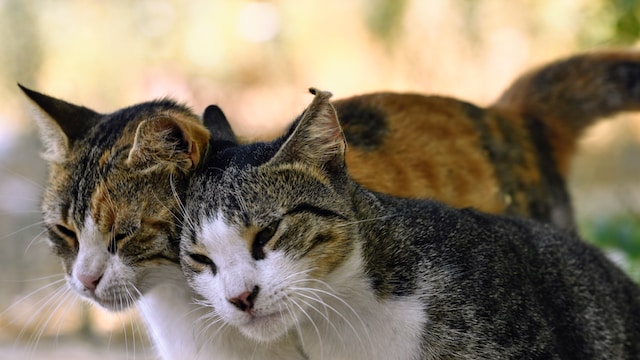In the hidden corners of our urban landscapes, a complex web of social interactions exists among a population often overlooked and misunderstood: street cats. Far from being solitary creatures, these resilient felines have been observed forming unique communities, forging social bonds, and establishing support networks. This article explores the fascinating dynamics of the community of
In the hidden corners of our urban landscapes, a complex web of social interactions exists among a population often overlooked and misunderstood: street cats. Far from being solitary creatures, these resilient felines have been observed forming unique communities, forging social bonds, and establishing support networks. This article explores the fascinating dynamics of the community of street cats, shedding light on their social intelligence and the benefits of their interconnectedness.
Contrary to the perception of street cats as loners, they display a remarkable ability to form social bonds with their fellow feline companions. Within their territories, street cats establish hierarchical structures, with dominant individuals taking charge and others falling into various roles within the community. These social hierarchies help maintain order, minimize conflict, and allocate resources effectively. By establishing these social bonds, street cats create a sense of unity and cooperation within their communities.
One notable aspect of the street cat community is the sharing of information about food sources and potential dangers. Through a combination of vocalizations, body language, and scent marking, street cats communicate and transmit vital information to their peers. For instance, when one cat discovers a consistent food source, others are quickly alerted to its presence. This sharing of information helps ensure the well-being of the community as a whole and exemplifies the interconnectedness and cooperation within street cat societies.
Support networks play a vital role in the community of street cats. It is not uncommon to find groups of cats banding together to defend their territories against intruders or perceived threats. Their collective efforts ensure the safety and security of their community, demonstrating a sense of unity and loyalty. Additionally, communal grooming behaviors are observed, which serve to strengthen social bonds and foster a sense of trust among group members.
Within street cat communities, mother cats exhibit remarkable dedication and care towards their offspring. Female cats create safe spaces, often in hidden locations, where they raise and nurture their kittens. Other members of the community, both male and female, may contribute by providing protection, food, or assistance in caring for the young. This collaborative effort highlights the communal nature of street cats and showcases their capacity for empathy and shared responsibility.
While street cats face numerous challenges, such as scarcity of resources and potential conflicts with humans or other animals, their ability to form social bonds and support networks is instrumental in their survival. These communities create a support system that enables them to navigate their urban environments more effectively. By relying on the collective knowledge and cooperation of the group, street cats increase their chances of finding food, securing shelter, and mitigating potential risks.
Understanding the intricacies of street cat communities can foster empathy and inform efforts to support their well-being. Animal welfare organizations and compassionate individuals play a crucial role in providing food, water, and medical care through trap-neuter-return (TNR) programs. These initiatives help manage feral cat populations while recognizing and respecting the importance of their social structures. By advocating for responsible pet ownership and supporting initiatives that address the needs of street cats, we can contribute to creating a more compassionate and inclusive society.
In conclusion, street cats defy the stereotype of solitary and isolated creatures. They form interconnected communities, where social bonds and support networks are vital for their survival. The cooperative behaviors, sharing of information, and collective efforts within these communities highlight the social intelligence and resilience of street cats. By appreciating and supporting the community dynamics of street cats, we can foster a greater understanding of their needs and advocate for their well-being in a world where they coexist with humans.

















Leave a Comment
Your email address will not be published. Required fields are marked with *